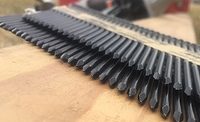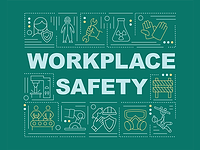Unique Anticorrosion Primer Draws Paint Manufacturers’ Attention






An innovative primer that stops corrosion for decades has caught the attention of multinational paint companies, several of which are engaged in discussions for exclusivity in various regions of the world. Unlike traditional primers that sit on the surface of steel, this primer chemically bonds with steel to form an alloy layer that corrosion cannot penetrate.
Paint companies have the opportunity to sell the primer, which has been proven in extensive testing and field use, along with their topcoat as part of a complete system, and can begin providing it to their customers immediately. The anticorrosion primer, EonCoat®, is available as a standalone product, cobranded, private labeled, or with a license to manufacture by EonCoat, LLC, the Raleigh, North Carolina-based primer manufacturer of the same name.
“Paint companies have spent millions of dollars on primer R&D and manufacturing over the years, but primers have special considerations in terms of corrosion control that do not always match the core competency of offering a full range of aesthetic topcoats,” says Merrick Alpert, President of EonCoat.
The coating industry’s interest in the primer follows years of extensive third-party laboratory and field testing that has resulted in its use by some of the world’s largest companies including Sinopec.
As proven by NASA’s beachside corrosion test results, the EonCoat primer – on a standalone basis – has outperformed the industry’s leading anticorrosive systems, which utilized both primer and topcoat.
In other testing, the anticorrosion primer remained unaffected after thousands of hours in the salt fog chamber. Cyclic polarization test data also shows that the primer’s protection is consistent with that delivered by premium alloys such as Hastelloy.
EonCoat’s approach is completely different from the paint industry’s typical method of protecting carbon steel from corrosion. The alloy layer, formed through a chemical reaction with steel, makes it impossible for corrosion promoters like oxygen and humidity to get behind the primer even if gouged because the steel’s surface is turned into an alloy of stable oxides. Once the steel’s surface is stable (the way noble metals like gold and silver are stable) it will no longer react with the environment and cannot corrode.
From a technical viewpoint, the root of the corrosion problem stems from the fact that steel rusts when its atoms lose electrons, and then bond with oxygen to balance their electrical charge. In an attempt to deter corrosion, paint companies have traditionally added phosphate and silicate to their primers as a substitute for the oxygen atoms to which steel atoms bond.
Unfortunately, there are two main problems with this traditional approach. First, there is no way to load enough phosphate into paint to balance the electrical charge of steel atoms. Second, the phosphate in paint is typically encapsulated in a polymer that functions like glue, slowing the release of phosphate to an unsatisfactory rate.
EonCoat solves these problems by chemically bonding phosphate directly to the steel, rather than trapping it in a gluey resin.
“The primer forms an iron phosphate alloy layer chemically bonded to the steel that prevents corrosion,” says Alpert. “The result is that the primer’s phosphate volume, and consequently its anticorrosive properties, is dozens of times greater than the phosphate-silicate load in typical primers.”
In addition, a tough phosphate ceramic layer that forms on top of the alloy layer provides another layer of protection from corrosion, as well as impact and abrasion, adds Alpert. This phosphate ceramic layer also serves as an extra phosphate reservoir to replenish and thicken the alloy layer over time. The end result is an anticorrosive primer that prevents corrosion on steel for decades.
The anticorrosion primer is used globally with a wide range of topcoats, and is compatible with a diverse set of coating chemistries. Major customers, including those from the oil and gas, industrial, infrastructure, heavy equipment, marine and water utility industries, will purchase the primer as well as the topcoat from paint companies as part of a complete anticorrosion system.
“Several multinational and regional paint manufacturers will begin offering EonCoat primer as part of a total anticorrosion system by the end of the year to better serve their industrial customers,” concludes Alpert.
For more information, visit www.eoncoat.com.
By EonCoat
Looking for a reprint of this article?
From high-res PDFs to custom plaques, order your copy today!








